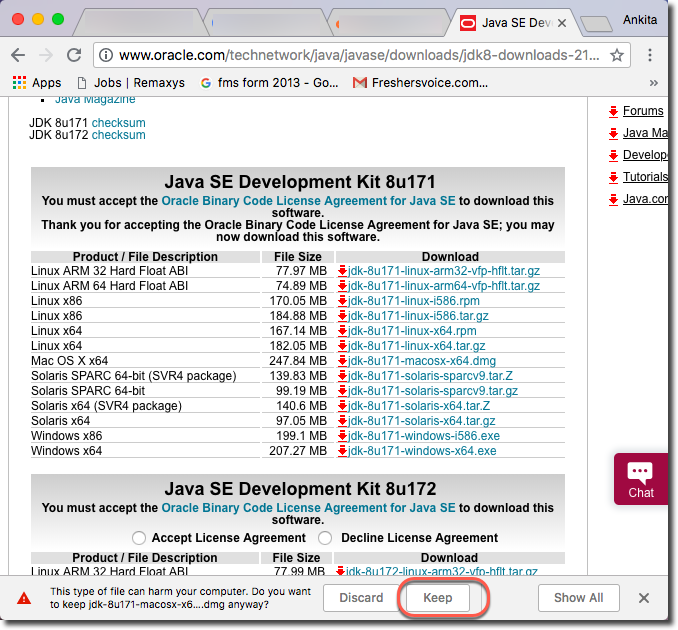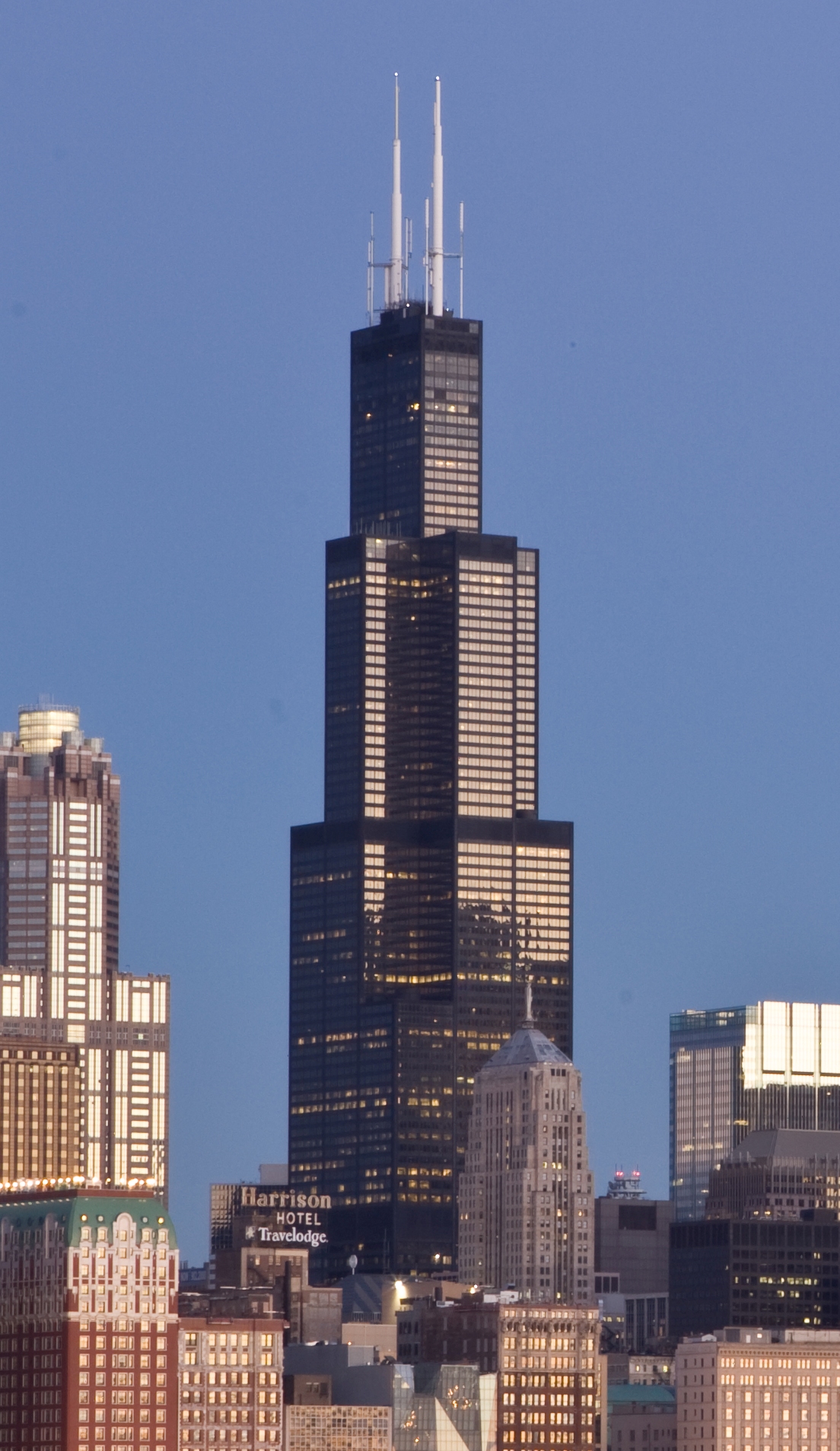This page describes how to install and uninstall JDK 8 for OS X computers.
- Download Java Se 6 Runtime For Mac
- How To Download Java 6 For Mac Latest
- How To Download Java 6 For Mac Download
For Java versions 6 and below, Apple supplies their own version of Java. For Mac OS X 10.6 and below, use the Software Update feature (available on the Apple menu) to check that you have the most up-to-date version of Java 6 for your Mac. For issues related to Apple Java 6 on Mac, contact Apple Support. $ su -c 'yum install java-1.6.0-openjdk' The java-1.6.0-openjdk package contains just the Java Runtime Environment. If you want to develop Java programs then install the java-1.6.0-openjdk-devel package. For a list of pointers to packages of the BSD Port for DragonFly BSD, FreeBSD, Mac OS X, NetBSD and OpenBSD, please see the BSD.
This page has these topics:
See 'JDK 8 and JRE 8 Installation Start Here' for general information about installing JDK 8 and JRE 8.
See 'OS X Platform Install FAQ' for general information about installing JDK 8 on OS X.
System Requirements
Observe the following requirements:
Any Intel-based computer running OS X 10.8 (Mountain Lion) or later.
Administrator privileges.
Note that installing the JDK on OS X is performed on a system wide basis, for all users, and administrator privileges are required. You cannot install Java for a single user.
Installing the JDK also installs the JRE. The one exception is that the system will not replace the current JRE with a lower version. To install a lower version of the JRE, first uninstall the current version as described in 'Uninstalling the JRE'.

JDK Installation Instructions
When you install the Java Development Kit (JDK), the associated Java Runtime Environment (JRE) is installed at the same time. The JavaFX SDK and Runtime are also installed and integrated into the standard JDK directory structure.
Depending on your processor, the downloaded file has one of the following names:
jdk-8uversion-macosx-amd64.dmgjdk-8uversion-macosx-x64.dmg
Where version is 6 or later.
Download the file.
Before the file can be downloaded, you must accept the license agreement.
From either the Downloads window of the browser, or from the file browser, double click the
.dmgfile to launch it.A Finder window appears containing an icon of an open box and the name of the
.pkgfile.Double click the package icon to launch the Install app.
The Install app displays the Introduction window.
Note:
In some cases, a Destination Select window appears. This is a bug, as there is only one option available. If you see this window, select Install for all users of this computer to enable the Continue button.Click Continue.
The Installation Type window appears.
Click Install.
A window appears that says 'Installer is trying to install new software. Type your password to allow this.'
Enter the Administrator login and password and click Install Software.
The software is installed and a confirmation window appears.
Refer to
http://www.oracle.com/technetwork/java/javase/downloads/jdk-for-mac-readme-1564562.htmlfor more information about the installation.After the software is installed, delete the
.dmgfile if you want to save disk space.
Determining the Default Version of the JDK
Download Java Se 6 Runtime For Mac
If you have not yet installed Apple's Java OS X 2012-006 update, then you are still using a version of Apple Java 6 that includes the plug-in and the Java Preferences app. See 'Note for Users of OS X that Include Apple Java 6 Plug-in'.
There can be multiple JDKs installed on a system, as many as you wish.
When launching a Java application through the command line, the system uses the default JDK. It is possible for the version of the JRE to be different than the version of the JDK.
You can determine which version of the JDK is the default by typing java -version in a Terminal window. If the installed version is 8u6, you will see a string that includes the text 1.8.0_06. For example:
To run a different version of Java, either specify the full path, or use the java_home tool:
For more information, see the java_home(1) man page.
Uninstalling the JDK
To uninstall the JDK, you must have Administrator privileges and execute the remove command either as root or by using the sudo(8) tool.
For example, to uninstall 8u6:
Do not attempt to uninstall Java by removing the Java tools from /usr/bin. This directory is part of the system software and any changes will be reset by Apple the next time you perform an update of the OS.
Sep 01, 2019 This may be tough as Java 6 on the Mac was only provided by Apple. Oracle/Open JDK didn't take over to providing binaries until Java 7. Do you specifically need Java 6 or can you run it with a later version of Java?
RECOMMENDED: Click here to fix Windows errors and optimize system performance
How To Download Java 6 For Mac Latest
Oct 23, 2014 How to resolve Java SE 6 runtime message on Mac OSX 10.10 Yosemite & 10.11 El Capitan Split a scanned PDF page in half (into two pages) How to embed fonts in a PDF document. Legacy Java Se 6 Download For Mac Yosemite The after it's installed, you will receive another Nag screen about you need to install Java 6 Runtime to for a certain file to work. Write down name of that/those file(s) referred to, and and use Spotlight search to find the old Java.
Important Oracle Java License Update The Oracle Java License has changed for releases starting April 16, 2019. The new Oracle Technology Network License Agreement for Oracle Java SE is substantially different from prior Oracle Java licenses. The new license permits certain uses, such as personal use and development use, at no cost - but other uses authorized under prior Oracle Java licenses. Java for macOS 2017-001 installs the legacy Java 6 runtime for macOS 10.13 High Sierra, macOS 10.12 Sierra, macOS 10.11 El Capitan, macOS 10.10 Yosemite, macOS 10.9 Mavericks, macOS 10.8 Mountain Lion, and macOS 10.7 Lion.
If you try to run an Adobe CS6 or CS5 application (Photoshop, Illustrator, InDesign, etc.) on OS X Yosemite or later, you will most likely encounter a problem. After double-clicking on some Adobe applications, a message will appear informing you that you need to install the old Java SE 6 runtime environment to open the application.

In addition to the Adobe CS5 and CS6 software packages, other applications require the Java SE 6 runtime (Eclipse, PDF Studio 9, FileMaker Pro Advanced, Patch Tool, Dreamweaver, and even the popular Minecraft game).
This problem occurs because these applications (Adobe CS5, CS5, etc.) are based on Java 6. Mac OS X Yosemite (and later versions) have a newer version of Java Runtime (SE 8.0). However, the Java Runtime is not backwards compatible. Thus, even if the operating system has installed Java Runtime 8, NO application that relies on Java Runtime 6 will work. Learn how to get Java 6 on your Mac.
July 2020 Update:
We now recommend using this tool for your error. Additionally, this tool fixes common computer errors, protects you against file loss, malware, hardware failures and optimizes your PC for maximum performance. You can fix your PC problems quickly and prevent others from happening with this software:

- Step 1 : Download PC Repair & Optimizer Tool (Windows 10, 8, 7, XP, Vista – Microsoft Gold Certified).
- Step 2 : Click “Start Scan” to find Windows registry issues that could be causing PC problems.
- Step 3 : Click “Repair All” to fix all issues.
Installing Java SE 6 from Apple
- If the “More info” link doesn’t work, try this.
- Start the Adobe application or any other application that caused the error.
- Wait for the error to occur.
- Click the “More Information” link in the error window.
- This will open the Apple Support website.
- This page provides instructions for downloading and installing Java Se 6 on your Mac.
- After downloading the installer, double-click the .dmg file to launch the installer.
- Follow the on-screen instructions to complete the installation.
Installing Java SE 6 Manually
- Open the Apple support page to download the Java SE 6 installer.
- Click the “Download” button to download the installer.
- You can also download the file directly from here.
- When the download is complete, click the download icon on the Dock to open the download folder.
- Double-click the JavaforOS.dmg file to open the folder.
- Double-click the JavaforOSX.pkg file to launch the installer.
- Click Next and follow the on-screen instructions to successfully install Java SE 6.
- Try to open the problematic application and see if the Java SE6 error is resolved.
RECOMMENDED: Click here to troubleshoot Windows errors and optimize system performance
CCNA, Web Developer, PC Troubleshooter
I am a computer enthusiast and a practicing IT Professional. I have years of experience behind me in computer programming, hardware troubleshooting and repair. I specialise in Web Development and Database Design. I also have a CCNA certification for Network Design and Troubleshooting.
Information and system requirements for installing and using Oracle Java on Mac OS X
How To Download Java 6 For Mac Download
This article applies to:- Platform(s): Mac OS X
- Java version(s): 7.0, 8.0
» Download latest Java
» After I updated to Sierra, Yosemite or El Capitan, why am I told to install Java after I already installed the latest Java?
» Can I restore Apple Java 6 after uninstalling Oracle Java?
» What are the system requirements for Java on my Mac?
» Why can't I find Java 6 for Mac OS X on java.com?
» Can I use Chrome with Oracle Java on my Mac?
» How do I get Java for my Mac?
» How do I know if I have Java installed on my Mac?
» How do I install Java for my Mac?
» How do I find out what version of Java I have on my Mac?
» How do I enable Java on my Mac?
» How do I clear the Java cache on my Mac?
» How do I update Java on my Mac?
» How do I uninstall Java from my Mac?
» I do not have Mac version 10.7.3 (Lion) or higher. How do I get Java for other Mac versions?
» Is it safe to install previous or older versions of Java?
» Why will applets not run after getting Java through Apple Software Update?
» Why is Oracle Java available only for Mac OS X 10.7.3 and above?
» Can I install Java on Mac 10.10 (Yosemite)?
» The installation hangs during an auto-update, what can I do to get the latest Java?
» When I try to use Java from the command line, why doesn't it work?
» How do I get support or provide feedback on Java?
After I updated to macOS Sierra 10.12, El Capitan (OS X 10.11), or Yosemite (OS X 10.10), why am I told to install Java after I already installed the latest Java?
See information about Apple Java messages.
Can I restore Apple Java 6 after uninstalling Oracle Java?
Yes, see the instructions on the Apple website Restore Apple Java 6. If you have JDK 7 or later versions installed on your system and you want to restore Apple Java 6, then those JDK versions need to be uninstalled first. See the instructions to Uninstall JDK.
What are the system requirements for Java on my Mac?
Operating system requirements: For Java 7 and later versions, you will need an Intel-based Mac running Mac OS X version 10.7.3 (Lion) and above. Installing Java on a Mac is performed on a system wide basis, for all users, and administrator privileges are required. Java can not be installed on a per-user basis.Browser requirements: A 64-bit browser (Safari, for example) is required to run Oracle Java on Mac.
Why can't I find Java 6 for Mac OS X on java.com?
Legacy Java Se 6 Runtime For Mac Yosemite Free Download
For Java versions 6 and below, Apple supplies their own version of Java. For Mac OS X 10.6 and below, use the Software Update feature (available on the Apple menu) to check that you have the most up-to-date version of Java 6 for your Mac. For issues related to Apple Java 6 on Mac, contact Apple Support. Oracle and Java.com only support Java 7 and later, and only on 64 bit systems.
Mac OS X and Apple Java 6 End of Life
Apple has posted notice that Mac OS X 10.11 (El Capitan) will be the last OS X release that supports Java 6, and as such, recommends developers whose applications depend on Java 6 to migrate their apps to a newer Java version provided by Oracle. » More info (apple.com)
Can I use Chrome with Oracle Java on my Mac?
Chrome browser versions 42 and above. Starting with Chrome version 42, Chrome has disabled the standard way in which browsers support plugins. More info
How do I get Java for my Mac?
You can download Java from java.com.
How do I know if I have Java installed on my Mac?
Mac OS X 10.6 and below: Apple's Java comes pre-installed with your Mac OS.
Mac OS X 10.7 (Lion) and above: Java is not pre-installed with Mac OS X versions 10.7 and above. To get the latest Java from Oracle, you will need Mac OS X 10.7.3 and above.
If you have Java 7 or later versions, you will see a Java icon under System Preferences.
Java versions 6 and below are listed in the Java Preferences.app located in the Applications > Utilities folder on your Mac.
How do I install Java for my Mac?
See Mac Java installation instructions.
How do I find out what version of Java I have on my Mac?
Mac OS X 10.7.3 and above: Under System Preferences click on the Java icon to access the Java Control Panel which will list your Java version.
If you do not see a Java icon under System Preferences, Java 7 or later versions is not installed.
How do I enable Java on my Mac?
When you install Oracle Java on your Mac (Lion and above), Java will be enabled by default.
If you are running a Java application in the browser, you will need to also check that Java is enabled in your browser.
For earlier versions of Java, check the Apple Support site.

How do I clear the Java cache on my Mac?
See How to clear the Java cache on Mac.
How do I update Java on my Mac?
See How to update Java on Mac.
How do I uninstall Java from my Mac?
See Mac Java uninstall instructions.
I do not have Mac version 10.7.3 (Lion) or higher. How do I get Java for other Mac versions?
For Java versions 6 and below, Apple supplies their own version of Java. Use the Software Update feature (available on the Apple menu) to check that you have the most up-to-date version of Apple's Java for your Mac.
Users of Lion Mac OS X 10.7.1 and 10.7.2 should upgrade to 10.7.3 or later versions, so you can get the latest Java version from Oracle.
Is it safe to install previous or older versions of Java?
Java Se Runtime For Mac Yosemite 10
Oracle highly discourages users from using older versions of Java. Installing old and supported versions of Java on your system presents a serious security risk. Upgrading to the latest version of Java ensures that Java applications will run with the most up-to-date security and performance improvements on your system. You can confirm that you have the latest version on the verification page. If installing an older version of Java is absolutely required, you must first uninstall the current version. See the instructions on the Mac uninstall Java FAQ.
Why will applets not run after getting Java through Apple Software Update?
Java Se Runtime Environment Download
Apple disables the Java plug-in and Webstart applications when the Java update is done using Software Update. Also, if the Java plug-in detects that no applets have been run for an extended period of time it will again disable the Java plug-in.
Why is Oracle Java available only for Mac OS X 10.7.3 and above?
The Java Runtime depends on the availability of an Application programming interface (API). Some of the API were added in Mac OS X 10.7.3. Apple has no plans to make those API available on older versions of the Mac OS.
Can I install Java on Mac OS X 10.10 (Yosemite)?
Yes. See Mac OS X 10.10 FAQ.
The installation hangs during an auto-update, what can I do to get the latest Java?
Java Se Runtime For Mac Yosemite Vista
During an auto-update, Mac OS X 10.9 (Mavericks) users might see the installation stall. Download the latest Java from the java.com web site.
When I try to use java from the command line, why doesn't it work? I have Oracle's version of the JRE installed.
Installing a JRE from Oracle does not update java -version symlinks or add java to your path. For this functionality, you must install the full JDK. See Mac command line info.
How do I get support or provide feedback on Java?
Provide us details on Feedback form for reporting issues or providing feedback for Java.
Java Se Runtime For Mac Yosemite 10
You might also be interested in:
- How do I install Java for my Mac?
- How do I uninstall Java on my Mac?
- Where is the Java Control Panel on Mac?
- How do I clear Java cache on my Mac?
- How do I Update Java for my Mac?
- How do I disable Java in my web browser?